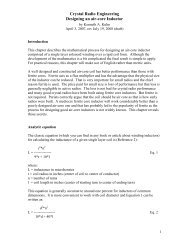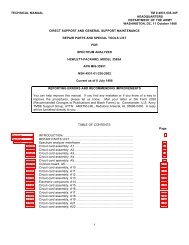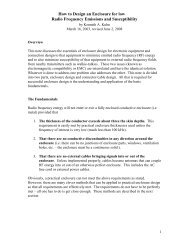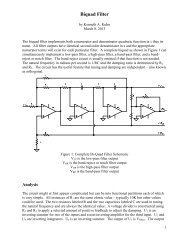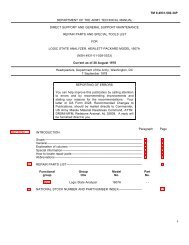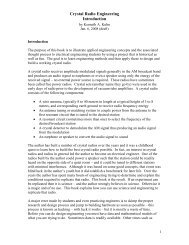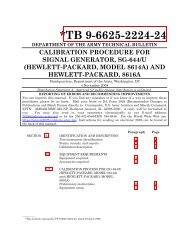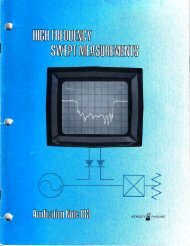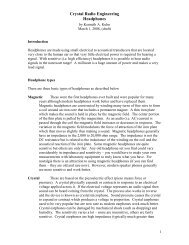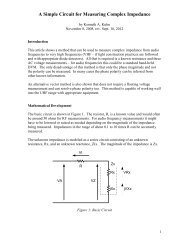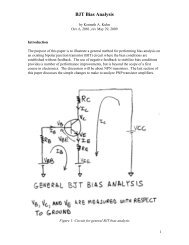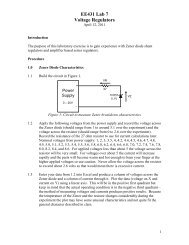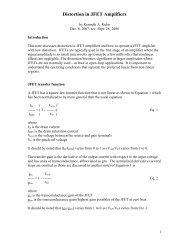Amplifier Frequency Response - Ken Kuhn's
Amplifier Frequency Response - Ken Kuhn's
Amplifier Frequency Response - Ken Kuhn's
Create successful ePaper yourself
Turn your PDF publications into a flip-book with our unique Google optimized e-Paper software.
<strong>Amplifier</strong> <strong>Frequency</strong> <strong>Response</strong>The low cutoff frequency isFigure 1: AC coupling, series circuitFcl = 1 / (2 * π* Rseries * Cseries) Eq. 1An amplifier typically has several AC couplings from input to output. The question ishow to compute the net low cutoff frequency of a chain of AC coupled stages.Computing the exact cutoff frequency is impractical for hand calculations–the highorder math is best done via a computer. For many problems an exact answer is notnecessary and a reasonable approximation is fine. A popular approximation is as followsFcl_net ~= sqrt(Fcl1 2 + Fcl2 2 + … Fcln 2 ) Eq. 2It should be obvious from Eq. 2 that Fcl_net will always be higher than the highestindividual cutoff frequency. Another observation is that the higher cutoff frequenciesstrongly dominate the result. The accuracy of Eq. 2 is reasonable for most cases and istypically better than twenty percent. The accuracy is worst if most individual cutofffrequencies are nearly the same–the error can be several tens of percent.The design process is determining the proper size capacitors to use for each coupling inorder to achieve the desired net low cutoff frequency. In thinking about how one shoulddistribute the time constants for each coupling the thought should occur to make all timeconstants the same–thus the low cutoff frequency is identical for all couplings. Thisconcept greatly simplifies what otherwise would be a huge guessing game. From earlierdiscussion it should be noted that the individual cutoff frequency for each coupling mustbe lower in order to net a target net low cutoff frequency. The question for the designeris how much lower? Simplistically, one might think that the cutoff frequency should bethe target cutoff frequency divided by the number of AC coupling but this turns out to beoverkill. Each stage only has to reduce the power transfer by one nth of half. Thisproblem is readily solved via a computer that raises the first order transfer function to thenth power and then solves for the resultant cutoff frequency using numerical methods.2



